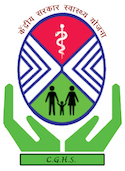50-60 sneezes altogether. Either blocked nose or running nose. All time you feel irritated. And headache adds on as a horrible feature of the disease. You need to take this or that medicine- everyday. And most of the times – medicines stop working in this condition. Even people opt for surgery and surgery also fails. As a physician I have noticed that 10-15 years old cases are easily treatable through Sinus Treatment in Ayurveda. Even you don’t need to continue medicines for rest of your life.
Here we will discuss about the sinusitis and along with that we will discuss about the Sinus Treatment in Ayurveda, in detail.
The bones around the nose are “hollow”. These hollow structures (cavities) are- sinuses. These have mucus membrane inside. And Air is also there. When something “traps” inside these cavities. The mucus membrane, irritates. And due to irritation, the membrane excretes a lot of sputum or mucus. This leads to the irritation in the upper respiratory passage.
When this mucus- flows- nose runs. And when this mucus stucks somewhere- it is blocked nose. When the irritation increases- body wants to expel the mucus and sneezes are the best way to deal with this.
Facts on Sinusitis
- Ayurveda refers to this condition as – Pratishyay or peenas.
- Sinusitis happens due to the build-up of mucus and inflammation of paranasal sinuses.
- The paranasal sinuses are hollow spaces behind the face that leads to the nasal cavity that is lined with a mucous membrane that produces slimy secretions known as mucus to keep the nasal passage moist, trap the germs, and dust particles.
- In most cases, inflammation of the sinus occurs along with inflammation of the nose.
- Every year of 17% of females and 10% of men are affected by sinusitis globally.
- About 18 to 22 million people across the globe visit doctor for chronic sinusitis annually.
- Broadly, sinusitis may be acute or chronic or is caused due to bacteria, viruses, allergy, or maybe an autoimmune immune reaction.
- Sinusitis is painful and uncomfortable.
- In most cases, sinusitis goes away without any medical intervention. However, if the symptoms last for more than ten days, it is better to consult a doctor.
- Most of the people suffering from sinusitis do not spread sinus infection to others.
- The most commonly involved sinus in both chronic and acute sinusitis are anterior ethmoidal and maxillary sinus.
- Chronic rhinosinusitis is very common in children and adults.
- In some cases, the complication of sinus infection may lead to brain abscess, meningitis, osteomyelitis, and orbital cellulitis.
- Sinus Treatment in Ayurveda is completely possible.
Symptoms of Sinusitis
Sinusitis interferes with the normal drainage of the mucus and makes the nose stuffy. The area around the eyes is tender and swollen, and breathing through the nose is difficult.
Common symptoms of sinusitis include:
- Sinus headache –Headache is due to the partial or complete blockage of sinuses. The pain intensifies when the person bends down.
- Fever
- Pain or pressure in sinuses and teeth, eye, and ears.
- Nasal congestion and feeling nasal stuffiness
- A cough
- Sore throat
- Bad breath due to bacterial infections
- Sneezing and itching in allergic sinusitis
- Occasionally face swelling
- Weakness
- Fatigue
- Cough
- Congestion
- Postnasal drainage
- There is pus-like nasal discharge in bacterial sinus infection and whitish or clear discharge in non-infectious sinusitis.
It is better to seek and immediate care if you experience the following symptoms:
- Suddenly worsening symptoms
- Trouble breathing
- Double vision, reduced vision or difficulty moving your eyes
- Swelling around your eyes
- Headache accompanied by high fever
- Inability to tilt your head forward
Also, see a doctor if nasal sinus discomfort lasts for more than a week are you have severe pain.
Types of sinusitis
Medically according to symptoms sinusitis classifies in four types-
Acute – The symptoms of acute sinusitis last for not more than four weeks. It usually resolves on its own in a few days or gets better with appropriate treatment.
Subacute – This type of sinus infection does not get better with initial Sinus Treatment in Ayurveda and the symptoms last for 4-8 weeks.
Chronic – Chronic sinusitis happens due to repeated acute infections that are inadequately treated. The symptoms last for eight weeks or more.
Recurrent sinusitis – If you experience three or more episodes of acute sinusitis and believe it is termed as recurrent sinusitis.
Causes of Acute Sinusitis
Causes of acute Sinusitis include:
- Bacteria
- Viruses
- Fungi
- Intranasal allergies
- Hay fever
- Nasal polyps
- Deviated nasal septum
- Infected adenoids
- An infected tooth
- Cystic fibrosis is an inherited genetic disease where thick, sticky mucus builds up in the body
Risk factors for Acute Sinusitis
- Nasal passage abnormalities, such as a deviated septum or nasal polyp
- Tobacco smoking or frequent breathing in of other pollutants
- Large or inflamed adenoids
- Spending a lot of time in preschool, day-care, or other areas where infectious germs are frequently present.
- Activities that result in pressure changes, such as flying and scuba diving
- A weakened immune system
- Cystic fibrosis
Causes of Chronic Sinusitis
- Deviated septum – The septum that separates nasal sinus in two halves is a thin bony structure covered with mucus. It is ideally cantered between two halves. If the septum deviates, it interferes with sinus blockage.
- Nasal polyp – Nasal polyps (NP) are noncancerous growths within the nose or sinuses.
- Nasal cancer
- Respiratory tract infections. – Infections in your respiratory tract, such as a common cold, can inflame and thicken your sinus membranes and block mucus drainage. These infections can be viral, bacterial, or fungal.
Risk factors include:
- Allergies such as hay fever. Inflammation that occurs with allergies can block your sinuses
- Asthma
- Aspirin sensitivity
- A dental infection
How Sinusitis Occurs
The upper respiratory tract infection most common cause of acute sinusitis. The infection leads to inflammation of the sinus. In general, the infection resolves itself in about 14 days. However, if the symptoms get worse after 3 to 4 days or last longer than ten days, a secondary bacterial infection is diagnosed. Inflammation causes ostial blockage and predisposes the development of acute sinusitis. In response to inflammation, there is excessive production of the nasal mucosa that blocks nasal passages. Due to the mucous retention function of cilia to move the debris and mucus from the nose becomes less efficient and leads to bacterial growth.
If acute sinusitis does not resolve, then eventually, mucous retention leads to hypoxia, and Ostia blockage and chronic sinusitis develop. It promotes the recruitment of inflammatory infiltrates, the development of nasal polyps, and mucosal hyperplasia that predispose to chronic sinusitis.
Ayurveda about Sinusitis
Texr of Ayurveda talks about a condition- Prtaishyay and Peenas. Ayurveda defines the condition in a proper way-
“ Vatam prati abhimukham syayate iti Pratishyayaha”
The Kapha dosha when moves towards the direction of the Vata this condition refers to- Pratishyaya. In this condition- doshas excretes from the nose.
Charaka simplifies the details-
संस्त्यानदोषेशिरसिप्रवृद्धोवायुःप्रतिश्यायमुदीरयेत्तु|
When doshas vitiates and Vata puses the doshas out- this condition is Pratishyaya.
This is amazing that this is not Kapha Dosha. This is more like a Vata disease. Because Vata needs a passage. And when Kapha blocks the passage, the strangulated Vata Dosha struggles and this leads to the problem of Pratishyay.
So Ayurveda is clear about the disease.
Types of Sinusitis According to Ayurveda
Ayurveda also classifies the condition in different conditions. This classification is according to Doshas.
Here are the details-
Vataja Pratishyaya:
The sinusitis with Vata Dosha has the following signs and symptoms.
- Feeling of needles in the nose.
- Heavy sneezings
- Thin water like discharge.
- Problem with voice – roughness of the voice.
- Headache.
- Dryness in nose.
Pittaja Pratishyaya:
When Pitta aggravates, this leads to the pittaja type of sinusitis.
- Feeling like inflammation in nose.
- Burning sensation in nose.
- Fever
- Thirst
- Yellowish discharge from nose.
Kaphaja Pratishyaya:
This type of Sinustitis is one which relates to the Kapha aggravation-
- Loss of appetite
- Thick discharge from nose.
- Increased saliva production.
- Heaviness in the nose and face.
- Feeling like itching in nose.
When we don’t address the condition in right time. It becomes chronic. And this condition in Ayurveda is referred as -Dusht Pratishyaya. Which means- persistent or complicated sinusitis.
Dusht Pratishyaya:
Here are the details about the condition of the chronic sinusitis.
- Heavy Sneezing
- Dryness of the nasal mucosa.
- Obstruction in nose.
- Bad smell in nose.
- Complicated and regular rhinitis.
- Swelling in the nose.
- Nasarbuda (the polyps or adenoids) because Ayurveda refers to the condition of “growth” as Arbuda.
- Pus with mucus.
- Problem with eyes (watery and red eyes)
- Blockage in ears.
- Hair fall- Baldness
- Graying or whitening of hair.
- Excessive thirst.
- Problem in breathing.
- Fever
- Loss of weight.
Surely this is the most comprehensive understanding of the condition of sinusitis. Ayurveda also talks about the causes of the condition-
Causes of Sinusitis According to Ayurveda
Ayurveda defines the pathological causes of the condition in detail. Because these causative factors, if not avoided properly- Sinus Treatment in Ayurveda is not possible.
सन्धारणाजीर्णरजोतिभाष्यक्रोधर्तुवैषम्यशिरोभितापैः| प्रजागरातिस्वपनाम्बुशीतैरवश्ययामैथुनबाष्पधूमैः||
- To suppress the natural urges like- cough, sneezes. Because when we suppress these urges- pollens / dust particles can move to the paranasal sinuses. Which further cause more problems.
- Exposure to the the dust- due to professional reasons.
- Anger
- Abrupt change in weather or weather irregularities.
- Not wearing anything on head in heat.
- Improper timings of sleep
- Sleeping in day hours
- Awakening in night.
- To work in too much cold
- Excessive crying.
- Due to working or staying in the smoky place
So, if you are doing any of these or any of these causes are around you- you need to avoid these. As a clinician I have witnessed that most of the patients have a bad habit of sleeping in wrong time. And once we make sure that patient follows his biological clock- things improve dramatically.
Vaidya Dr. Pardeep on sinusitis.
Now comes the main part. How does Ayurveda treats the condition of sinusitis.
Sinus Treatment in Ayurveda
The treatment of every condition follows the cause and exact diagnosis. Because Ayurveda has deeper understanding about cause and classification, therefore Sinus Treatment in Ayurveda becomes easy for many conditions like sinusitis.
The main problem with treatment of the sinusitis is- most of the times clinicians keep on working on the “kapha” dosha. And we miss the involvement of the other two doshas. Therefore Sinus Treatment in Ayurvedayields only temporary results in the treatment. But at Sukhayu Ayurved we work on the diagnosis of the dosha first, thus results are more accurate.
Once we can confirm the involvement of the doshas, it becomes easy for us to mark the line of treatment. The treatment of sinusitis in Ayurveda is different for different doshas.
- In case of Vataja Sinusitis: the Sinus Treatment in Ayurveda is all about the oleation of nasal mucosa, with herbs which can remove the dryness due to Vata dosha. These medicines should be “hot” in nature too.
- Pitta type Sinusitis: Here medicines should be cold- yes you heard right. The “general-medicines of cough cold” can complicate the condition of the Pitta type sinusitis.
- When Kapha causes Sinusitis: Things should go like Vata but no unctuousness.
This is the reason, Nasya with SOME-OIL, never works. So this is important to find out the cause before Sinus Treatment in Ayurveda.
Approach for Sinus Treatment in Ayurveda
At Sukhayu we follow a proper approach for the treatment of the sinusitis. Here are the main points, what we do-
Ayurvedic Medicines for Sinusitis
The account of medicine is to help to bring the doshas to normal. Besides this, medicines also help in modulate the immunity. Because without handling the immunity- it is not possible to handle any inflammatory process like sinusitis.
Panchakarma For Sinusitis
When doshas are too much- it is important to remove the doshas. Because Panchakarma is tool for this, therefore in cases which are chronic- needs to go for Panchakarma.
This is not alone about Nasya. Because the problem involves the nose. According to Doshas- we might need to go for some other procedures too.
Nasya with oil- will complicate the condition in Kapha subtype of Sinusitis.
We need to get a proper diagnosis before proceeding for anything.
Many patients will appear with sinusitis. And because of the their “google-knowledge”. They ask- Nasya. Because they believe that nasya is a remedy for healing them. And it becomes challenging to make them believe that they are not doctors- I am! We all need to learn that professionals are meant for something.
Vaidya Dr. Pardeep Sharma about treatment of sinusitis
So you need to book a Video Consultation first- so that our Vaidya Drs. can make a diagnosis and can guide you properly about diet-lifestyle and medicines. So that you can get better with your heavy sneezes- running or stuffed nose.













